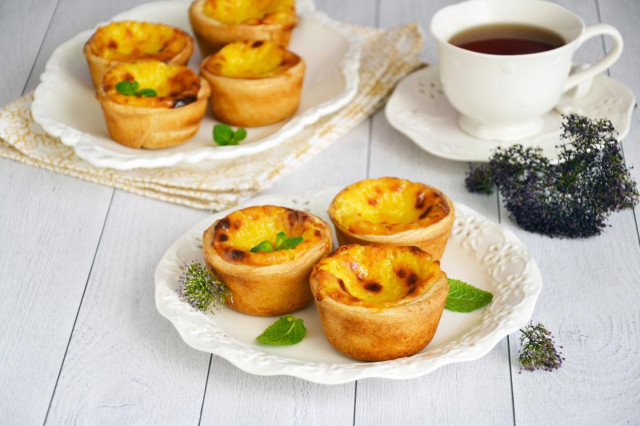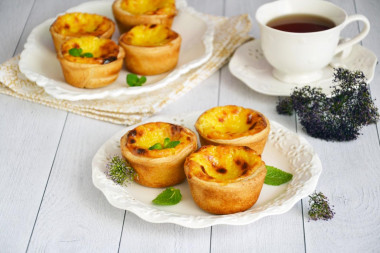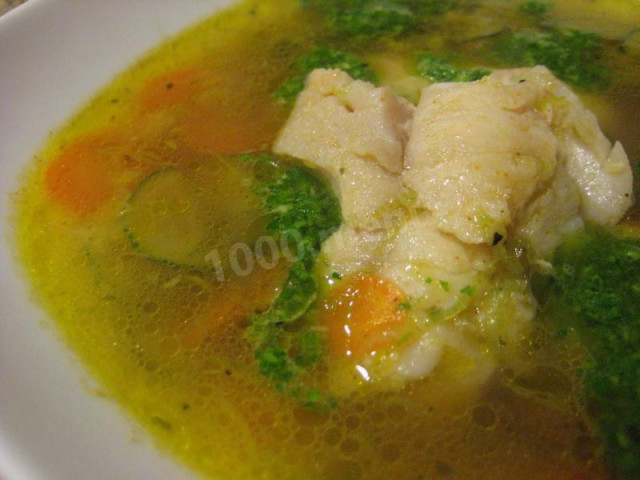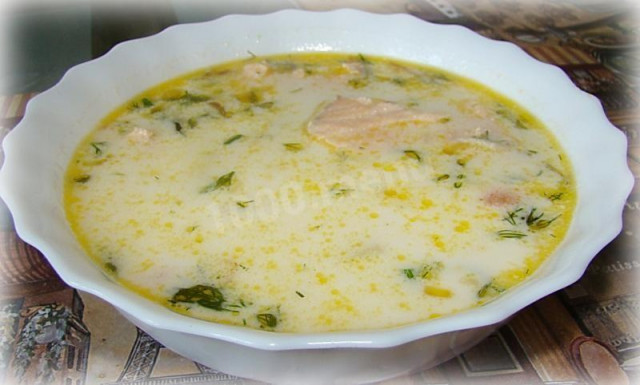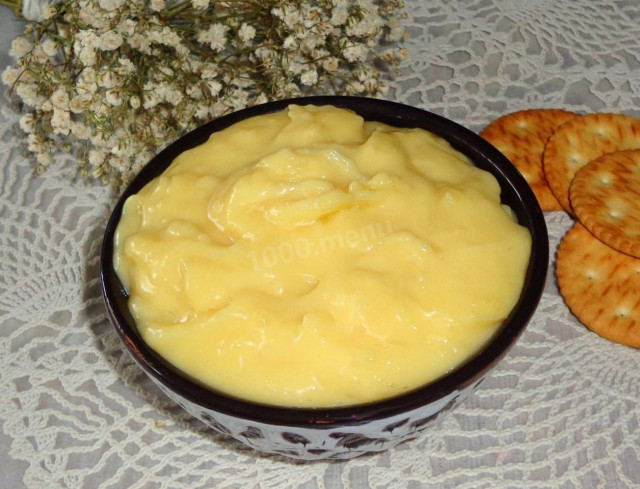Composition / ingredients
Step-by-step cooking
Step 1:
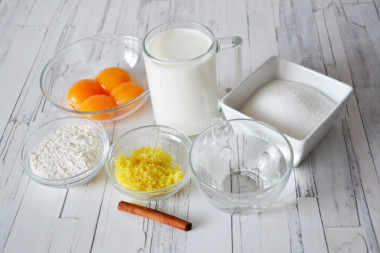
Filling. To make a cream for Pate cakes, we will need: milk; yolks; lemon zest; flour; cinnamon stick. For sugar syrup: water and sugar.
Step 2:
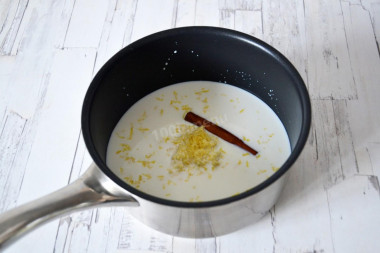
Pour 200 ml of milk into a saucepan. Add lemon zest and cinnamon stick.
Step 3:

Put the milk on the fire and bring to a boil.
Step 4:
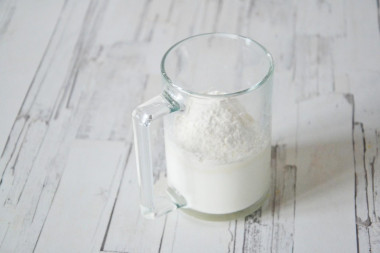
While the milk is heating, dilute the sifted flour in the remaining milk.
Step 5:

Mix thoroughly to get rid of lumps.
Step 6:
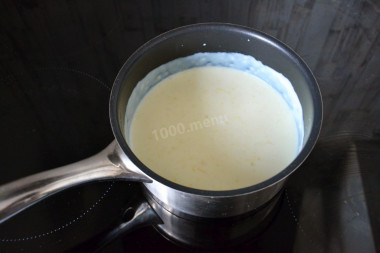
When the milk boils, pour in the milk-flour mixture in a thin stream with constant stirring. Stirring constantly, bring the cream to thicken. Remove the cream from the heat. It is better to cover the cream with cling film in contact so that the cream does not get wet.
Step 7:

In another saucepan, combine water and sugar. Put a saucepan on medium heat and bring to a boil and cook for 3 minutes.
Step 8:
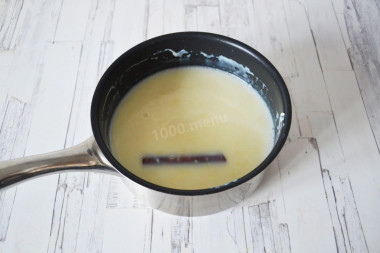
Pour hot sugar syrup into the custard in a thin stream with constant stirring.
Step 9:

Mix everything thoroughly. Rub the cream through a sieve, thus cutting off the lemon zest and cinnamon. We will get a homogeneous gentle cream.
Step 10:
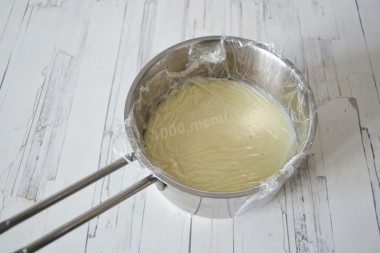
Cover the cream with cling film in contact and leave to cool.
Step 11:
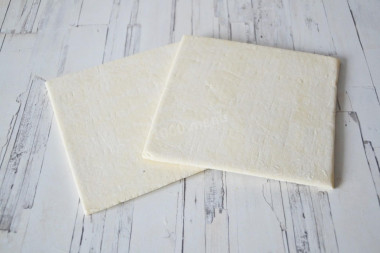
Dough. While the cream is cooling, prepare the dough. You can prepare puff pastry yourself. I took the store in plates. Pre-defrost the dough.
Step 12:

Roll out each plate of dough lightly on a table dusted with flour. Lay the rolled plates on top of each other. They don't have to be even-even. While twisting the roll, the unevenness will not be visible.
Step 13:

Roll the dough into a tight roll.
Step 14:
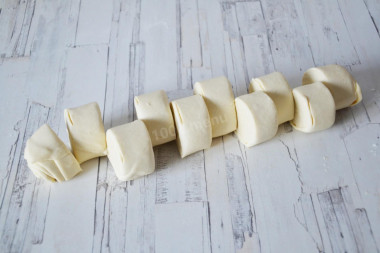
Cut the roll into identical pieces according to the number of molds (10-12). I made 10, but, as it turned out, I had to make 12, since the amount of cream is calculated for exactly 12 cakes. As a result, I had excess cream, which I just poured into silicone molds and baked together with cakes.
Step 15:
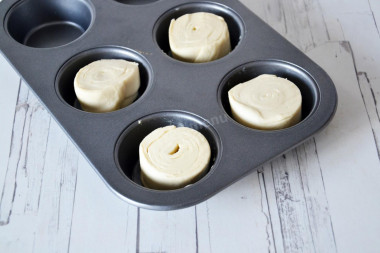
Put each roll slice up in a greased mold.
Step 16:
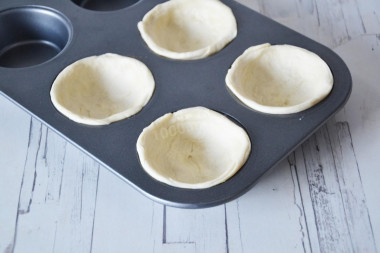
Put each roll slice up in a greased mold, form baskets and make high sides.
Step 17:
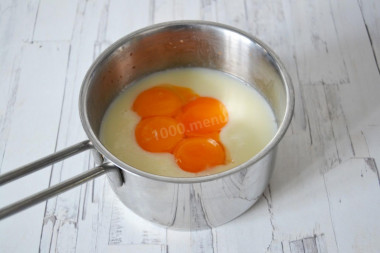
Add the yolks to the cooled cream.
Step 18:
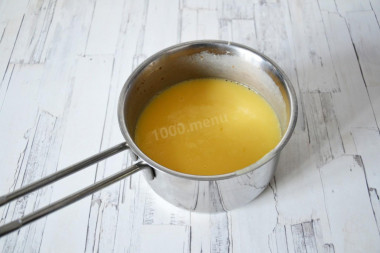
Mix everything thoroughly with a whisk. The consistency of the cream should be semi-liquid, fluid. For convenience, you can pour the cream into a container with a spout so that the cream can be conveniently poured into a dough base.
Step 19:
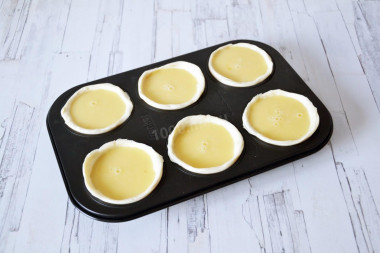
Fill the dough blanks with custard, a little short of the edges of the dough. Since the cream rises a little when baking, it can pour out of the molds. Bake cakes in preheated to 240°In the oven for about 20-25 minutes. Bake the last 5-7 minutes on the "top + bottom" mode so that the cream is nicely browned on top.
Step 20:
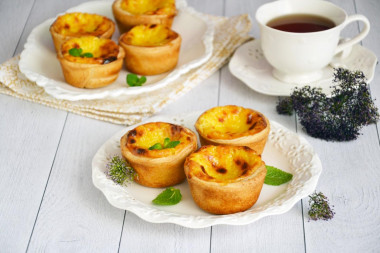
Here are such beautiful and insanely delicious cakes we have turned out. The surface should not be badly burnt over the entire surface. But small areas are more ruddy - welcome. Enjoy your meal!
Pate de nata cakes were invented by Catholic monks at the Jeronimos monastery in the community of Santa Maria de Belen in Lisbon before the XVIII century. Therefore, another common name for cakes is pate de belen. At that time, egg whites were used in monasteries to starch clothes, in particular, the vestments of nuns. The remaining yolks were used to make cakes and pastries. Recipes for sweet pastries and confectionery have spread throughout the country.
After the disappearance of religious orders and on the eve of the closure of many monasteries after the Portuguese Revolution of 1820, monks began selling pate de nata at a nearby sugar factory to get at least some income. In 1834, the Jeronimush monastery was closed, and the recipe for the cake was bought by the owners of the sugar factory. In 1837, they opened the Pate de Belen factory, which produces famous cakes to this day.
Caloric content of the products possible in the composition of the dish
- Whole cow's milk - 68 kcal/100g
- Milk 3.5% fat content - 64 kcal/100g
- Milk 3.2% fat content - 60 kcal/100g
- Milk 1.5% fat content - 47 kcal/100g
- Concentrated milk 7.5% fat content - 140 kcal/100g
- Milk 2.5% fat content - 54 kcal/100g
- Whole durum wheat flour fortified - 333 kcal/100g
- Whole durum wheat flour universal - 364 kcal/100g
- Flour krupchatka - 348 kcal/100g
- Flour - 325 kcal/100g
- Granulated sugar - 398 kcal/100g
- Sugar - 398 kcal/100g
- Puff pastry - 400 kcal/100g
- Puff pastry, unleavened - 337 kcal/100g
- Water - 0 kcal/100g
- Egg yolks - 352 kcal/100g
- Lemon zest - 47 kcal/100g
- Cinnamon stick - 261 kcal/100g

